Lightning Strikes
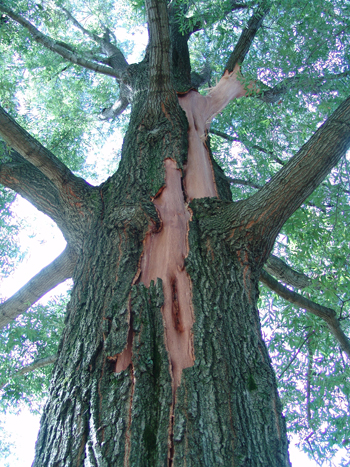
Summer heat is not complete without thunderstorms and lightning. As a kid you probably feared the sound of thunder more than lightning, while as an adult you know the lightning can cause the greatest damage, especially to trees.
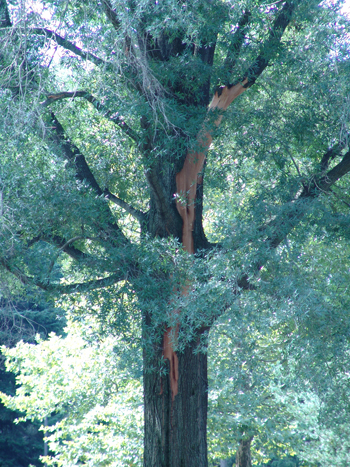
Stuck by lightning this past summer, this Quercus phellos exhibits common physical indicators of a lightning strike, vertical stripping. photo credit: R. Robert
This summer a Quercus phellos by Sharples Dining Hall was stuck. Typical of common physical indicators of a lightning strike, vertical stripping displaying the wood underneath the bark was present long the trunk of the tree and on some major limbs. Bark was also violently blown off the tree and scattered across the ground.
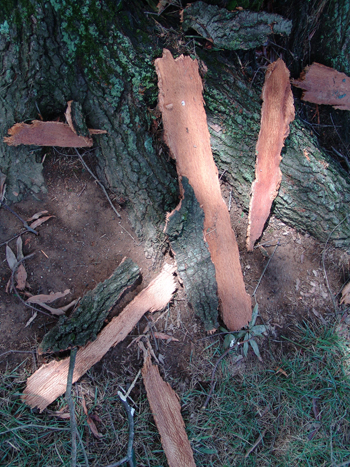
Bark violently blown off tree from lightning strike. photo credit: R. Robert
To clean-up after a lightning strike, pick-up the bark debris and assess for any immediate safety concerns. If there is nothing immediate, simply wait and see. Give you tree to time to heal and react to damage that was caused by the strike.
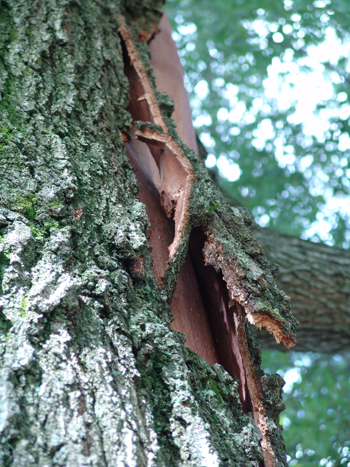
This bark has been damage by a lightning strike revealing the wood underneath. photo credi: R. Robert
Some branches will break and fall naturally as they are too damaged for the tree to sustain. If you only lose a couple of branches and see limited die-back, your tree should have a long life. If you see consistent damage throughout the canopy, the strike probably damaged the vascular tissues which conduct fluids up and down the tree. This will severely shorten the life of your tree.
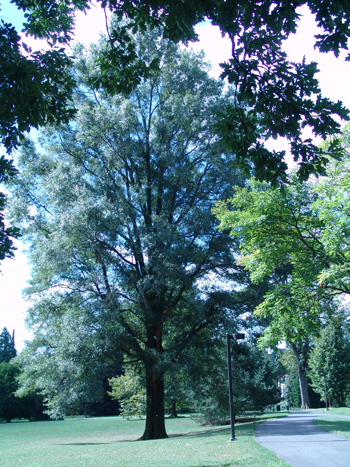
The canopy of Quercus phellos still looks healthy the day after a lightning strike. This tree's canopy will be monitored over the next two to three years to watch for signs of damage. photo credit: R. Robert
After cleaning up the bark debris around the Quercus phellos, we are in “wait and see” mode. Thus far the large oak has not dropped any branches and appears healthy. We will monitor the tree closely over the next two to three years to see if severe damage has occurred.





Diane Mattis
Posted at 08:47h, 13 SeptemberNice article and great photos Becky! Thank you.